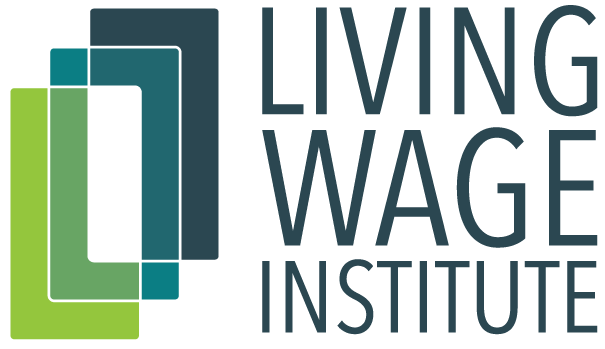



For further information, please visit the FAQs and Methodology pages or submit a question or request through the Contact page.
© 2024 Dr. Amy K. Glasmeier and the Massachusetts Institute of Technology
SIGN INMore Localities Embrace $15 An Hour
Paul Davidson USA TODAY December 20, 2021
This insert summarizes Paul Davidson's article published in USA Today, December 20, 2021; all credit is due to Mr. Davidson of USA Today.
"Twenty-one states and 35 cities and counties are set to raise their minimum wages on or about New Year's Day, according to a report provided exclusively to USA TODAY by the National Employment Law Project (NELP), a worker advocacy group.
California's minimum will reach $15 for the first time on January 1 for large employers. New York state – already at $15 in New York City and for fast-food workers statewide – will extend that benchmark to Long Island and Westchester County on New Year's Eve.
Four of the localities lifting their pay floors on January 1 will hit the $15 threshold for the first time: Denver, which is leaping from $14.77 to $15.87, and the California cities of San Diego, Oakland, and West Hollywood.
An additional 27 cities and towns already at $15 will climb even higher in a couple of weeks. California's Mountain View and Sunnyvale reach $17.10, and Seattle edges up to $17.27 for most employers.
A full-time worker at a fast-food restaurant currently earns the city's $14.36 hourly minimum in Oakland. A typical working family of (four adults) living in a two-bedroom apartment requires at least $3,000 to cover monthly household expenses. That equals 200 hours of labor needed based on the current minimum wage rate. Starting January 2022, Oakland's base wage will rise to $15.06, adding $112 a month.
Separately, at least 100 or so primarily big companies already pay $15 or higher, including Best Buy, Costco, Wayfair, The Container Store, Bank of America ($21.00), Apple, and Southwest Airlines, according to the NELP study. All told, by 2026, about 40% of the U.S. workforce will enjoy $15 minimum wage mandates, NELP figures show.
What is Driving This Change?
Pandemic-related labor shortages are presenting U.S. workers with unprecedented leverage. Several million Americans remain out of the labor market, lacking affordable child care, fearful of contracting COVID or living off savings of unemployment benefits or government stimulus checks. Many older people also are retiring early. Older adults constitute a disproportionate share of labor-force dropouts. Data from the Bureau of Labor Statistics show that more adults age 65 and older left the labor force in 2020 than in any year since the U.S. began tracking such information in 1948. Many will likely never work again, jeopardizing their immediate and long-term financial security.
Employers have little choice but boost pay to attract and hold onto workers amid a reopening economy and strong consumer demand. In October, there were 11 million job openings, and 4.2 million people quit, typically to take other positions that pay more, Labor Department figures show. Both totals are near records.
In November, wages overall rose 3.7% from a year earlier, the most since 2009, and pay for the bottom quartile of employees jumped 5.1%, the biggest gain in nearly two decades, according to the Atlanta Fed's wage growth tracker. According to the Labor Department, the average hourly earnings for employees at restaurants and bars surged 12.1% in October, the most on record, to $17.66.
Workers' newfound bargaining power has encouraged many to play hardball. The nation has seen a rise in strikes this fall at companies such as John Deere, Kellogg, and Kaiser Permanente, with many employees winning higher pay and benefits.
The worker-friendly landscape has lessened the impact of the minimum wage hikes since most employees' earnings already are close to or above the new pay floors, says Mark Zandi, chief economist of Moody's Analytics.
The Federal Minimum Wage Remains $7.25
Government-mandated increases are still critical to helping low-income households meet expenses, especially with inflation hitting a 39-year high last month. "At some point, we'll go back to an economy where workers don't have the leverage, and we'll need to rely on laws," she says. "It would not be good policy to leave wage floors to the discretion of the private sector."
However, the federal minimum wage has been stuck at $7.25 an hour since 2009, with Senate Republicans repeatedly blocking efforts to increase it. Although 30 states with more than 60% of the U.S. workforce now have higher pay floors than the federal government's, 20 states – mainly in the South and Midwest – rely on the national minimum and are unlikely to set a higher base. That has intensified the need for federal action. Yannet Lathrop, a researcher and policy analyst at NELP, says $15 provides just a living wage in much of the country.
Many employers say the minimum wage hikes will add to the cost pressures triggered by worker shortages and supply-chain bottlenecks that have delayed product deliveries.
Michael Saltsman, managing director of the Employment Policies Institute (restaurant industry-backed group), says wage increases will accelerate a trend toward more automation and fewer workers. A Congressional Budget Office study in 2019 found that a $15 federal minimum wage would increase pay for 17 million workers who earn less than that and possibly another 10 million who make slightly more. According to the study's median estimate, it would cause 1.3 million other workers to lose their jobs.
Not all of the base pay hikes taking effect next month will be large. A handful of states and 27 localities will enact small, annual cost-of-living increases. Pay floors will rise from $12.32 to $12.56 in Colorado, from $8.80 to $9.30 in Ohio, and $8.75 to $9.20 in Montana.